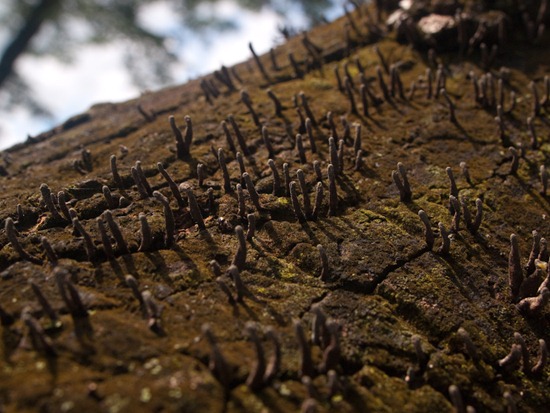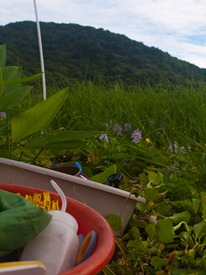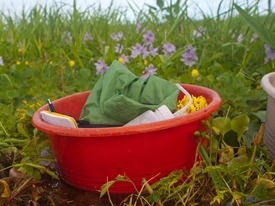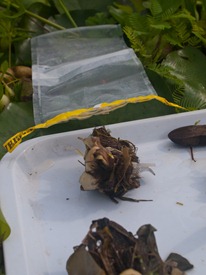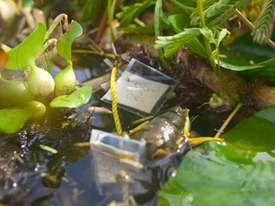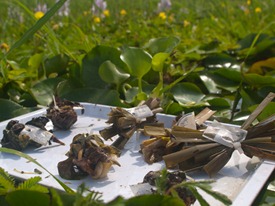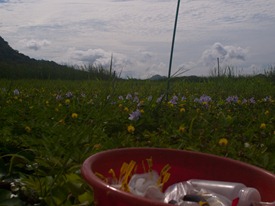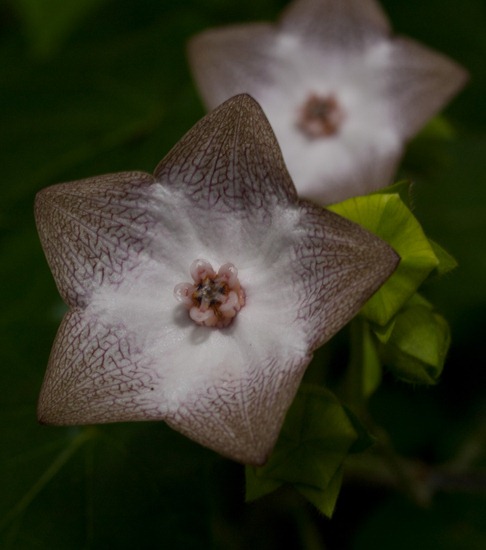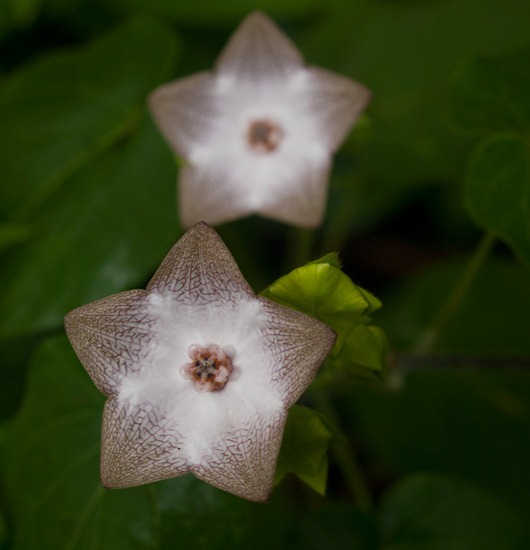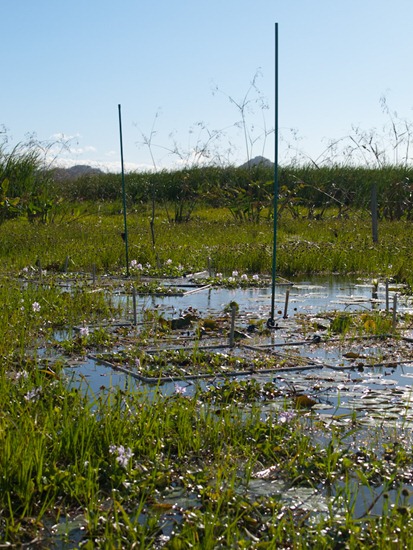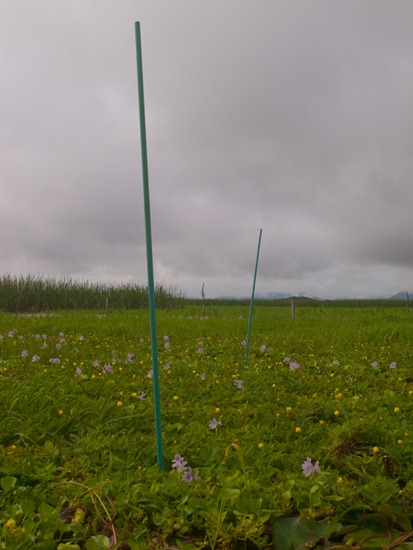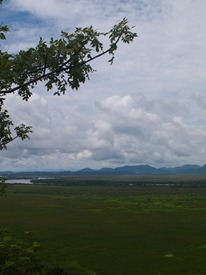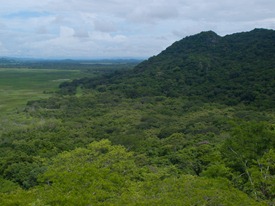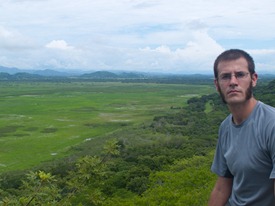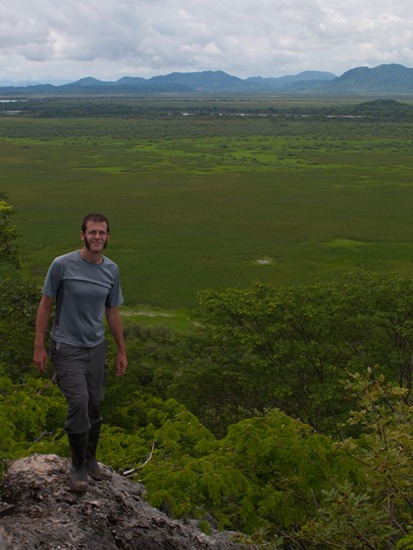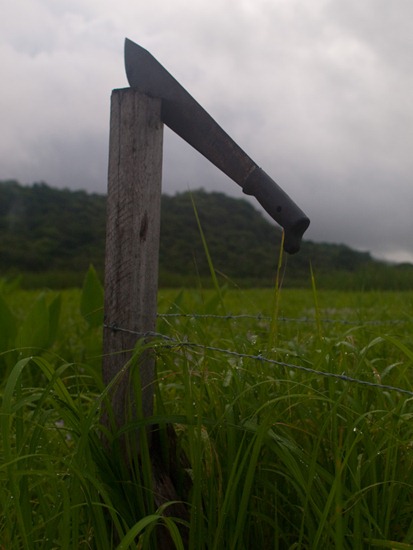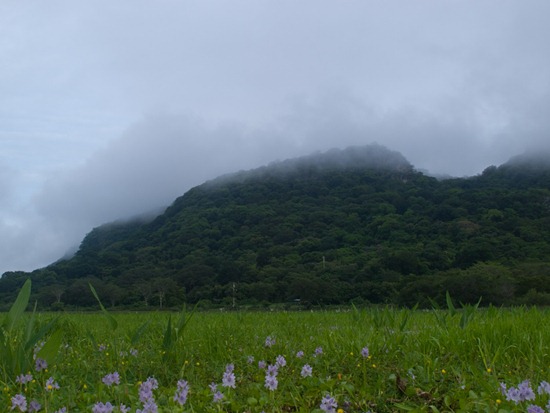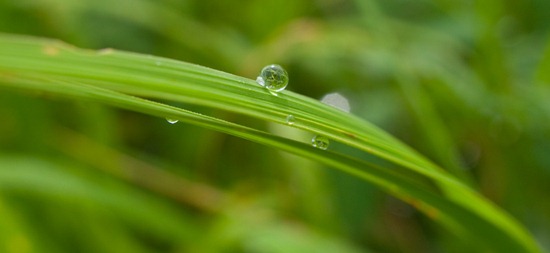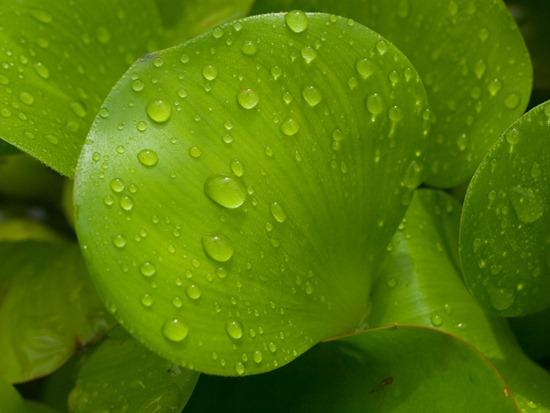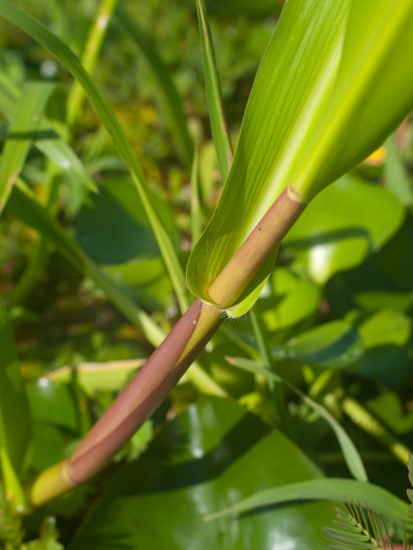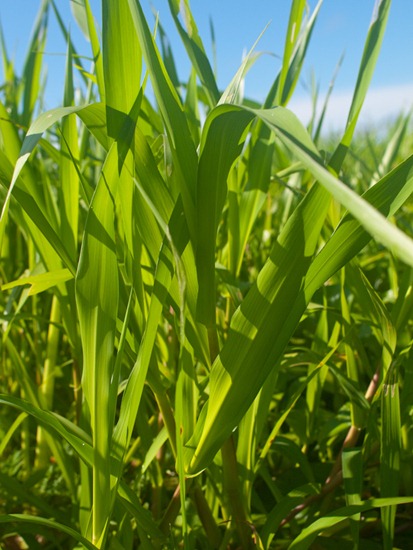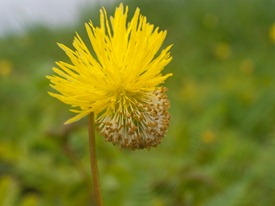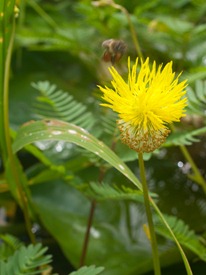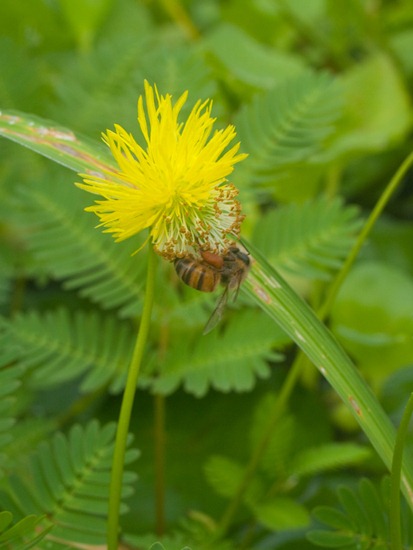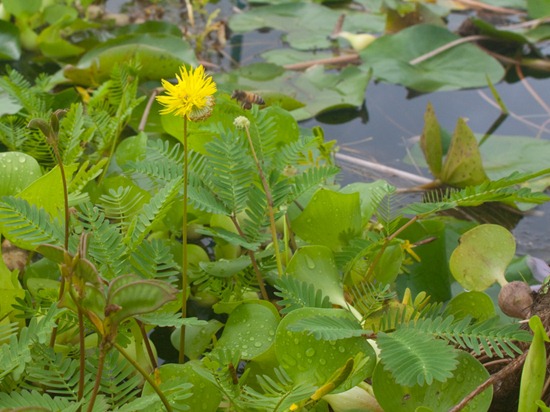Monthly Archives: July 2010
Diversity effects on decomposition field collection
| A couple of days ago, I collected a set of decomposing plant material bundles for my diversity effects on decomposition study. Again, this sequence illustrates some of the methods used to collect the ‘decomposition bundles’ – a combination of dead macrophyte tissue from one to five species, wrapped up with a zip-tie and attached to a string. Replicates are attached to the poles shown here and below (there are five).
Briefly, I uncovered the bundles, carefully sniped them from the string, placed them on a white tray, and bagged them in Whirl-Paks. From there, there is lab processing, which I’ll hopefully have a similar post for soon… |
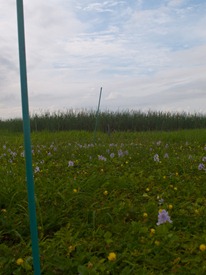 |
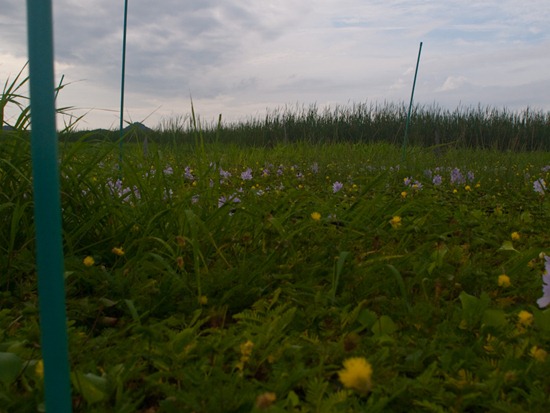
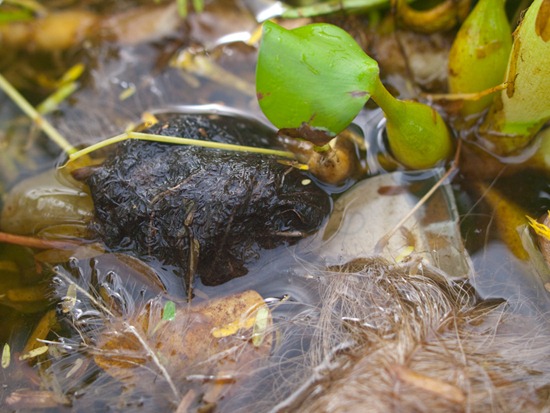
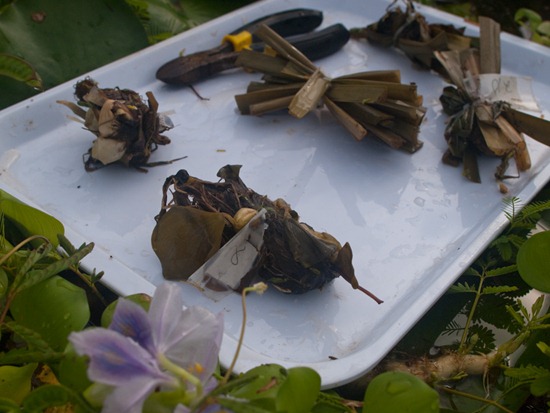
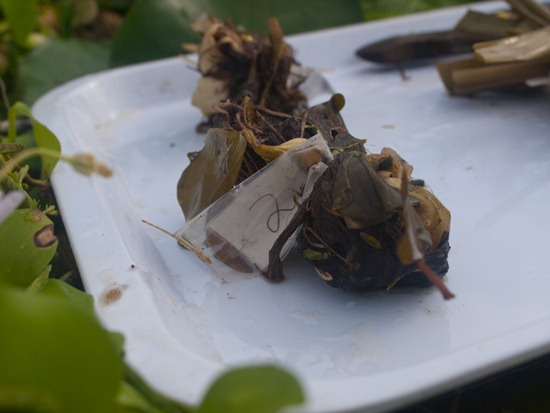
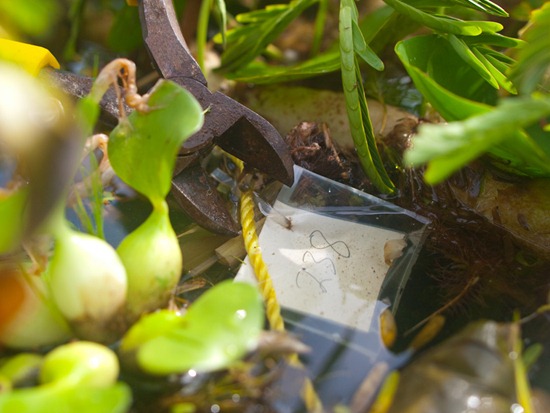
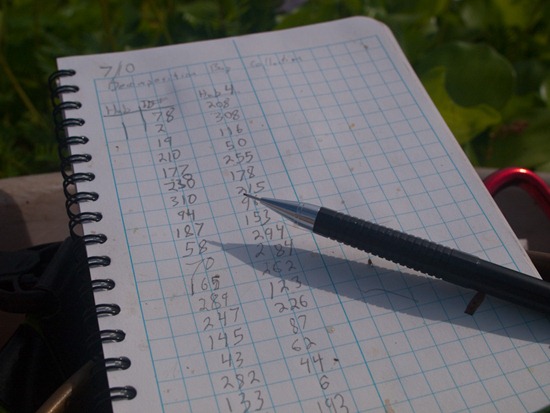
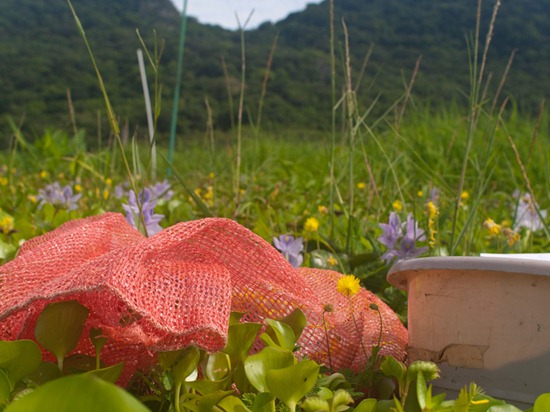
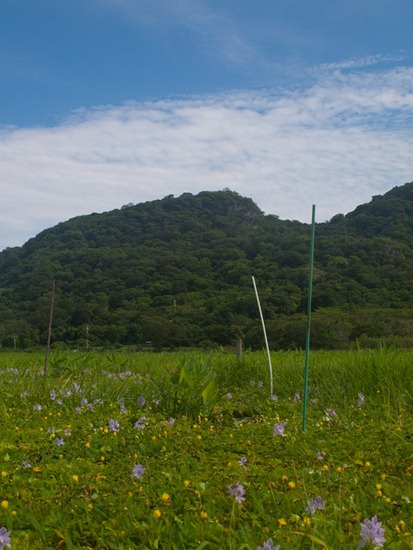
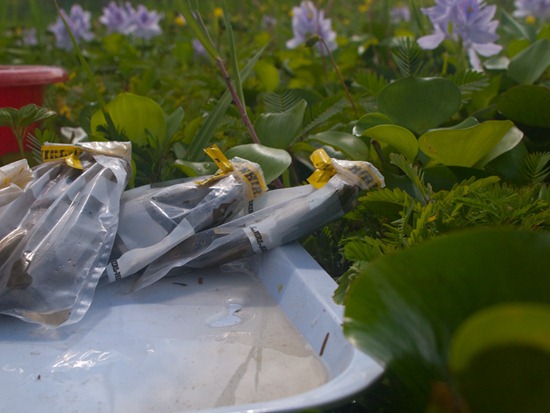
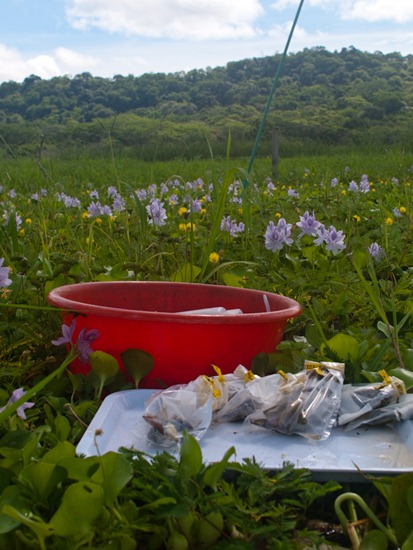
Maybe Solanaceae
Year to Year
View from La Roca
Still clean
Misty morning
The level of the vegetation is a bit deceiving below. It may look like the grasses are creeping up the fence, but it’s really the water that is creeping up and bringing the now-very-thick vegetation with it. The water level is almost at my chest, which never occurred last year. It’s also raining almost daily… We’ll see how things are in a couple of weeks, when I’m swimming while sampling and getting caught in that barb wire.
Droplets on Poaceae and Eichhornia
Hymenoachne amplexicaulis
A common, floating grass, H. amplexicaulis is identified by (and named for) the ear-lobes formed at the base of each leaf. It is by far the most abundant grass within the Palo Verde wetland, and is also the most easily identified, at least in my experience.
Inter-twined mats are extremely difficult to pass through, especially since cutting through them with a machete is nearly impossible.

